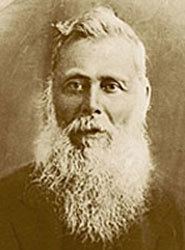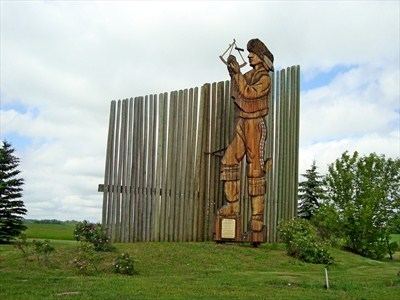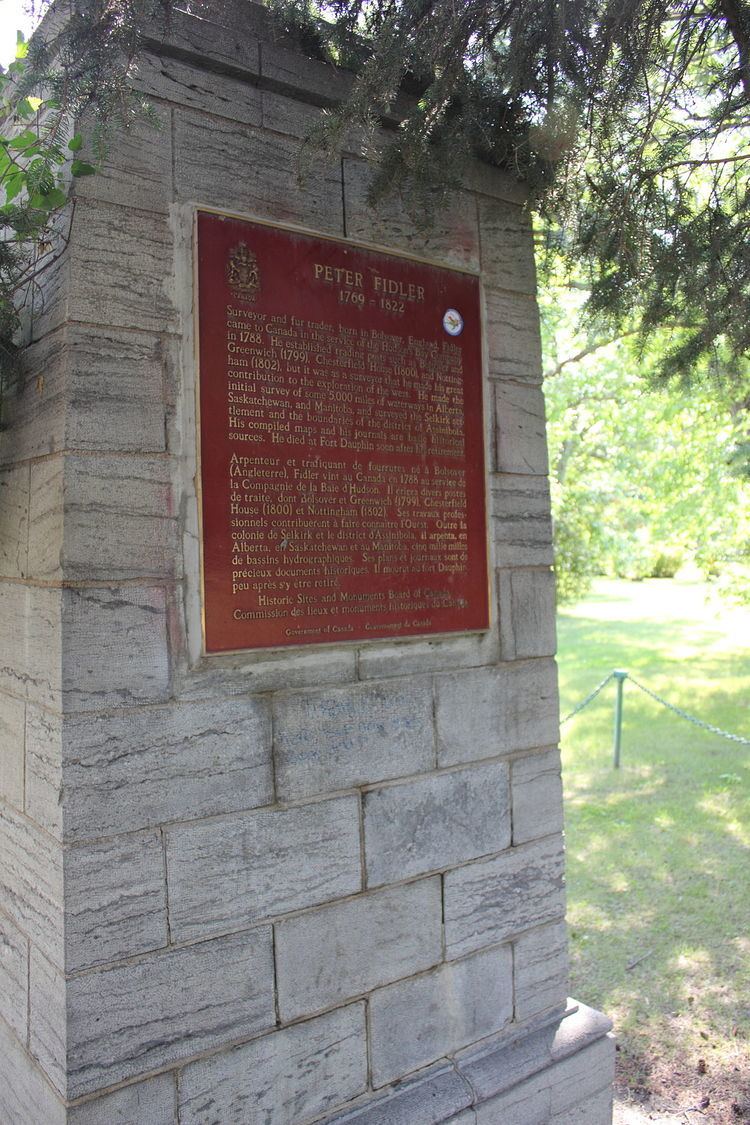Spouse Mary Fidler (m. 1794) Role Explorer | Name Peter Fidler Parent(s) James and Mary Fidler | |
 | ||
Born August 16, 1769 ( 1769-08-16 ) Bolsover, Derbyshire, England Children Thomas (1795), Charles (1798), George (1800), Sally (1802), Decusroggan (1824 - died at 24 days), Andrew (1806), Alban (1809), Mary (1811), Faith (1813 - died at 6 weeks), Clement (1814), Colette (1817), Margaret (1819 - died at 1 month), Peter (1820), Harriett (1822) Died December 17, 1822, Fort Dauphin | ||
Occupation Explorer and Map Maker | ||
Peter Fidler (16 August 1769 – 17 December 1822) was a British surveyor, map-maker, chief fur trader and explorer who had a long career in the employ of the Hudson's Bay Company in what later became Canada. He was born in Bolsover, Derbyshire, England and died at Fort Dauphin in present-day Manitoba. He married Mary Mackagonne, a Cree woman, and together they had 14 children.
Contents

Career

Fidler joined the Hudson's Bay Company as a labourer at London and took up his post at York Factory in 1788. He was promoted to clerk and posted to Manchester House and South Branch House in what later became Saskatchewan within his first year. In 1790, he was transferred to Cumberland House and given training in surveying and astronomy by Philip Turnor who also trained David Thompson. On 23 December 1788, Thompson had seriously fractured his leg, forcing him to spend the next two winters at Cumberland House convalescing which gave Fidler the opportunity to accompany Turnor on an exploration expedition to the west from 1790 to 1792 attempting to find a route to Lake Athabaska and Great Slave Lake and therefore a route to the Pacific Ocean. Although the river route to the west his employer sought was found not to exist, on this and following expeditions Fidler gathered data for the first of several maps that he produced. Information he gathered was incorporated into the maps of North America produced by Aaron Arrowsmith.
During his years with the company, Fidler established Carlton House in 1795 (near present-day Kamsack, Saskatchewan) and Chesterfield House in 1800. He was in charge of Cumberland House from 1796. In 1797, he established Bolsover House (near Meadow Lake, Saskatchewan) and Greenwich House at Lac la Biche. In 1806, after two years of harassment by Samuel Black of the rival North West Company, Fidler surrendered Nottingham House on Lake Athabasca and fled the post with his men.
In his will he requested that anything remaining from his other bequests be placed in a fund and the interest be allowed to accumulate until August 16, 1969, at which time the whole would be paid to the next male heir in descent from his son Peter. As of 1946 this fund could not be located.
Recognition
Fidler Point on Lake Athabasca is named for Fidler. There is a large carved monument to Fidler at Elk Point, Alberta and a monument to his legacy at Fort Dauphin created by the Manitoba Land Surveyors. In his home town of Bolsover, there is a local nature reserve containing a monumental cairn named after him.
